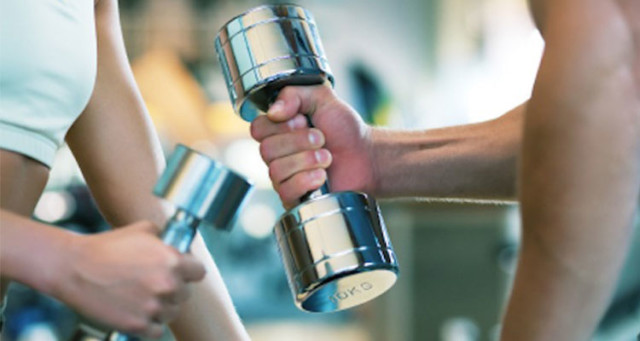Breathing is an activity that we do unintentionally, but we can also check that trying to control the movement of the bodies (or the bodies) involved, such as the diaphragm, chest, shoulders, abs. In a conscious way, you can control the phase of inhalation and exhalation in their overall duration or even suspend respiration entering apnea.
Many sports disciplines and practices such as yoga and pilates, give much importance to breathing and other Eastern disciplines come to add value is also a spiritual meaning. Obviously, in this article, we are interested in the more practical aspects of respiration, in particular, one wonders if there is a correct breathing while performing the exercises with weights. Usually instructors recommend :
- Inhale during the unloading phase of the year, typically when the weight returns to the initial position.
- Exhale during the exercise load, or when it is more difficult.
This method is well established, generally works well even if at the beginner perceive this practice as an additional constraint that can confuse him. Force yourself to control your breathing in this way requires a good deal of concentration and then puts the athlete in the right condition for maximum attention to what he is doing. Too many times you see people in the gym who look around while doing an exercise, or worse, talking with her neighbor! Focus on your breathing is a good way to think exclusively to the gesture that is happening. A good general rule is as follows :
- The most important thing to do is not to hold your breath during the loading phase.
Holding your breath during the loading phase is a very common mistake because it is instinctive to hold your breath during maximum exertion. Instead, it is just the opposite of what you should do because this practice can also lead to serious consequences, especially if the effort involves the muscles of the upper body.
Hold your breath, and then deliberately block the glottis, leading to a compression of the veins due to increased pressure in the thoracic cavity. As a result of compression, the veins can also become clogged part (as if they were choked by a hand …) and this significantly slows the return of venous blood to the heart. As a result, the blood pressure rises, reaching values even as impressive as 300 mmHg (compared with 120 at rest).
Furthermore, as a result of reduced blood supply to the heart, also the blood output slows and decreases, decreasing the supply of blood and oxygen to the peripheral organs may suffer. In particular, reducing the spraying of the brain could give as result dizziness, blurred vision, etc…. until you get to see black and faint. These side effects affecting the brain are well known to opera singers practicing exercises that hyperventilation, in some parts, are performed in apnea.
An exception to the basic rule.
A partial exception to the above, there are a few tips in the literature relating exclusively to exercises that heavily involve the spine, such as squats and lunges performed with heavy weights and barbells. In these cases, it may be reasonable to hold your breath in the first phase activates the year corresponding to the concentric movement. Apnea is only partial limited to this stage, but allows for better coordination of the movement, contract your abs and protect the spine from potential serious injury to the vertebrae.
These exercises performed with a barbell are very complex and potentially a source of injury, so it would be better to run them in the presence of the instructor who will take care of even suggest the proper breathing and control at various stages of the year.











